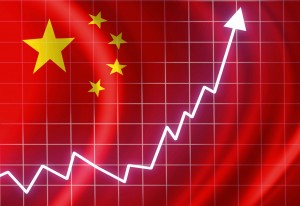
Chinese yuan is not considered commodity currency, except the vast coal resources, it has no significant amount of resources.
Apart from major currencies, who have found themselves in Forex markets because of either tradition or sheer economic power of countries behind them, there are commodity currencies who owe their Forex status to their relation to an important commodity. Unlike major currencies, who got in Forex markets because of economies of countries that back them, commodity block currencies are there because of their strong ties to commodities, such as oil, minerals, precious metals, agricultural and forestry products, machines etc.
Examples of commodity currencies in Forex markets
Currencies universally dubbed commodity currencies are: Norwegian crown, South African rand, Russian ruble, Brazilian real, Chilean peso as well as Australian, Canadian and New Zealand dollars. The most commonly used pairs are between US dollar and Australian, Canadian and New Zealand dollars (“Aussies”, “Loonies”, and “Kiwis” respectively). What these countries have in common is that they all rely on the export of particular commodities for the majority of their income.
Rundown of basic commodity currencies
Canada’s dollar is based on oil, but Canadian economy also relies on lumber and mining. Forex traders refer to it as “Loonie”, supposedly because of the depiction of a loon on a side of the coin.
Australia’s dollar, or “Aussie”, derives much of its value through its links to Australian mining industry and precious metals, especially gold and silver.
Among Forex traders, New Zealand’s dollar is known as “Kiwi”. Its value is most affected by New Zealand’s agricultural products as well as forestry products in the modern markets.
Norwegian crown has to thank Norway’s oil reserves for much of its value. Having said that, much of Norwegian economy goes to aluminum industry. Industrial metals make an important part of commodity markets. So does machinery, and Norway does not lag behind in that regard.
South Africa’s currency is the rand. The major commodities of South Africa are based on its mining industry. A large part of it encompasses precious metals – meaning gold, but diamonds and iron play an important part in South African economy.
Brazil’s real fuels what is widely considered one of the five largest economies in the future. Agriculture is an important part of the economy, at least when we talk about Brazil.
Russia deals in rubles, obviously. Russian economy is diverse, but a large chunk of it is being occupied by oil industry and products. Russian mineral wealth should not be underestimated, either. Gold and lumber may play an important part as well. Trading with gold was never so easy on the Forex markets. Lot of brokers, such as the HotForex as well, offer competitive spreads for trading with commodities.
Chilean peso and much of Chilean economy relies on industrial metals, primarily copper and related products.
To conclude
When it comes to commodity currencies in Forex markets, traders should keep in mind that values of the aforementioned is closely related to one or more commodities. Their fates are linked, at least for the time being. Major currencies, on the other hand, do not rely solely on one or two types of commodities, making them potentially more stable, yet less predictable, strangely enough.
